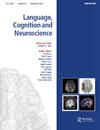How the brain processes emotional meaning of indirect reply: evidence from EEG
IF 1.8
3区 医学
Q2 AUDIOLOGY & SPEECH-LANGUAGE PATHOLOGY
引用次数: 0
Abstract
ABSTRACT People often express their message and emotions through indirect utterances. How the intended meaning of indirect utterances is comprehended remains not completely clear. We investigated how the emotional meaning of indirect replies is processed in the brain. Participants were required to comprehend dialogues. Three types of replies were constructed: direct reply, informative indirect reply and negative indirect reply. Our results showed that both informative and negative indirect replies were understood with lower accuracy and longer behavioural reaction times than direct replies. Moreover, informative indirect replies elicited a larger N400 than direct replies, whereas negative indirect replies (compared to informative indirect replies as well as direct replies) elicited enhanced ERP responses only over the late P600 component. These findings suggest that the cognitive processes involved in and the time course of the comprehension of indirect replies change dynamically as a function of the emotional aspects of the intended meaning.大脑如何处理间接回答的情感意义——来自脑电图的证据
本文章由计算机程序翻译,如有差异,请以英文原文为准。
求助全文
约1分钟内获得全文
求助全文
来源期刊

Language Cognition and Neuroscience
AUDIOLOGY & SPEECH-LANGUAGE PATHOLOGY-BEHAVIORAL SCIENCES
CiteScore
4.50
自引率
13.00%
发文量
70
期刊介绍:
Language, Cognition and Neuroscience (formerly titled Language and Cognitive Processes) publishes high-quality papers taking an interdisciplinary approach to the study of brain and language, and promotes studies that integrate cognitive theoretical accounts of language and its neural bases. We publish both high quality, theoretically-motivated cognitive behavioural studies of language function, and papers which integrate cognitive theoretical accounts of language with its neurobiological foundations.
The study of language function from a cognitive neuroscience perspective has attracted intensive research interest over the last 20 years, and the development of neuroscience methodologies has significantly broadened the empirical scope of all language research. Both hemodynamic imaging and electrophysiological approaches provide new perspectives on the representation and processing of language, and place important constraints on the development of theoretical accounts of language function and its neurobiological context.
 求助内容:
求助内容: 应助结果提醒方式:
应助结果提醒方式:


